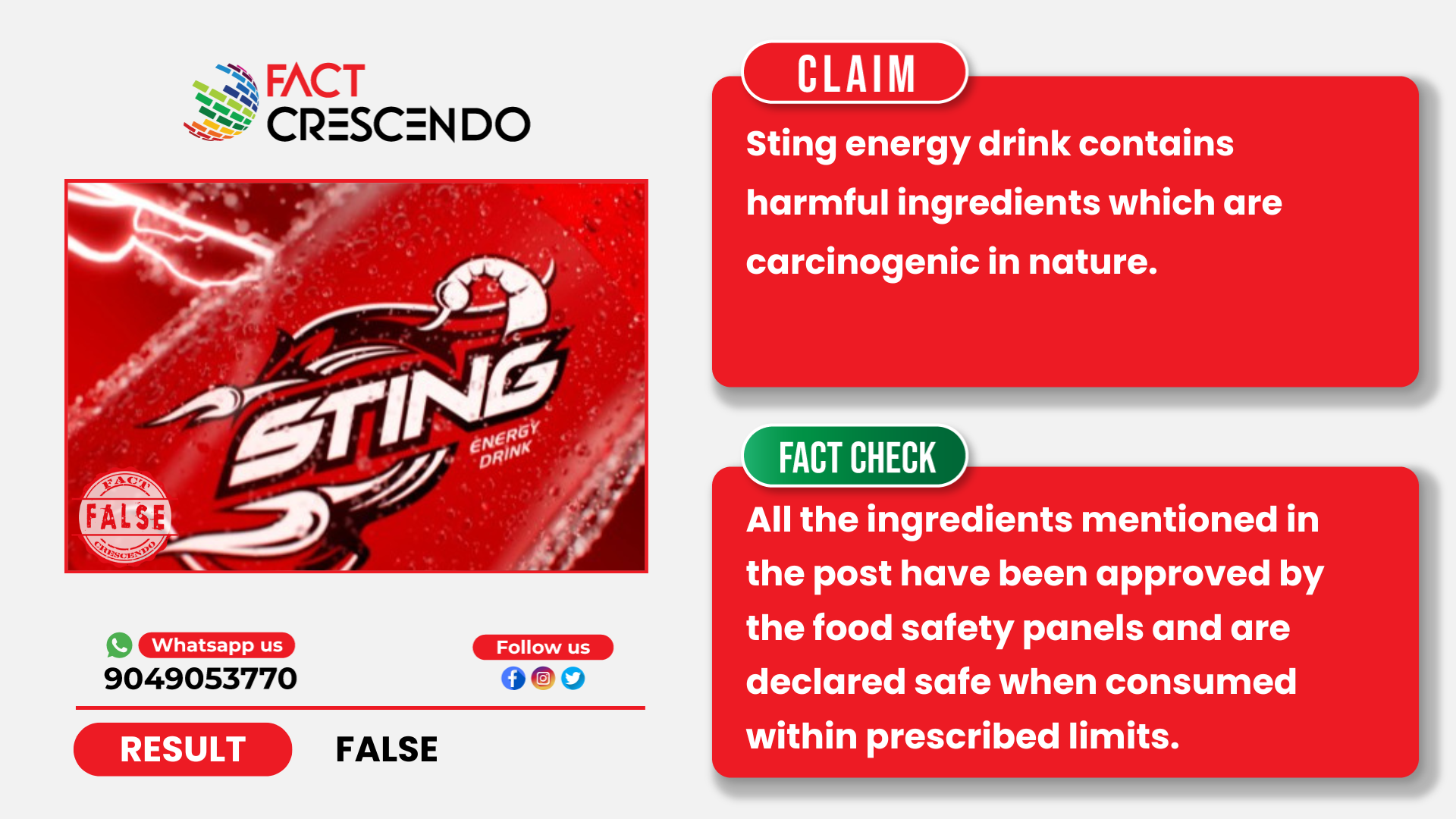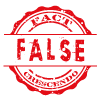
Currently, social media users have raised concern over the use of some of the ingredients used in the Sting energy drink. The claim suggests that the drink contains ingredients like Allura Red AC, E 955, E 950, E 211 etc. The ingredients are claimed to cause serious health issues including cancer.
However, Fact Crescendo found the claim to be false. All the ingredients mentioned in the post have been approved by the food safety panels and are declared safe when consumed within prescribed limits.
Fact Check-
Let’s check the facts of each of the ingredients mentioned.
Allura Red AC (Color): Allura Red AC is a food color dye also known as FD&C Red No.40 or simply Red 40.
The European Food Safety Authority (EFSA) reviewed the safety of Allura Red AC (E 129), a food colouring allowed in the EU, and confirmed it is safe within the established acceptable daily intake (ADI) of 0-7 mg/kg body weight. While a recent study suggested it might cause DNA damage in mice at high doses, long-term studies showed no evidence of cancer, even at doses far exceeding typical human consumption. Other genetic tests and studies on its breakdown products also indicated no significant harm. EFSA concluded that the observed DNA effects are unlikely to lead to cancer, reaffirming Allura Red AC’s safety when used as a food additive.
FDA has permitted the use of Red 40 in cereals, beverages, gelatins, puddings, dairy products and confections.
E 955: E 955 also known as sucralose is used as a sweetener. Some studies have shown that sucralose can affect the human gut by reducing good bacteria by half. Research on animals also suggests that it may cause inflammation in the body. Too much inflammation over time can lead to health problems like obesity and diabetes.
However, sucralose is approved for use in food as a sweetener. It is sold under the brand name Splenda. The FDA had approved sucralose for use in 15 food categories in 1998 and for use as a general-purpose sweetener for foods in 1999, under certain conditions of use. To determine the safety of sucralose, the FDA reviewed more than 110 studies designed to identify possible toxic effects, including studies on the reproductive and nervous systems, carcinogenicity, and metabolism. The FDA also reviewed human clinical trials to address metabolism and effects on patients with diabetes.
E 950: This is also known as Acesulfame potassium. Acesulfame potassium, also known as Ace-K or E950 has been approved by FDA for use in food as a sweetener. The FDA approved acesulfame potassium (Ace-K) as a food additive in 1988 for certain foods and beverages, and in 2003, it was approved as a general sweetener and flavor enhancer. To ensure its safety, the FDA reviewed over 90 studies that looked at potential toxic effects, including its impact on reproduction, cancer risk, and metabolism.

According to another report, the FDA and National Cancer Institute (NCI) had confirmed that Ace-K is safe and that there is enough evidence to say that it does not cause cancer. In 2005, the National Toxicology Program conducted a large animal study where they gave mice acesulfame potassium, making up 3% of their diet, for over 40 weeks. This is roughly equal to a person consuming more than 1,000 cans of soft drinks daily. The study found no evidence of an increased risk of cancer in the mice.
E 211: This is also known as Sodium Benzoate. Sodium benzoate is a chemical made by mixing benzoic acid with substances like baking soda or sodium hydroxide. It does not occur naturally. According to the Code of Federal Regulations, it is generally safe when used according to good manufacturing practices, with a maximum limit of 0.1% in food. The FDA has not confirmed its safety for other uses.
The European Food Safety Authority (EFSA) evaluated a study from Southampton University that suggested certain food additives, including artificial colors and sodium benzoate, might be linked to hyperactivity in children. EFSA reviewed the study and found that while some children may be sensitive to these additives, the overall evidence was not strong enough to confirm a direct link to hyperactivity. Based on this, EFSA did not change the safety limits for these additives but recommended further research.
Conclusion:
Fact Crescendo found the claim to be false. All the ingredients mentioned in the post have been approved by the food safety panels and are declared safe when consumed within prescribed limits.

Title:Is Sting Energy Drink Carcinogenic? No. All Ingredients Are Approved By The Food Safety Panel
Fact Check By: Siddharth SahuResult: False


